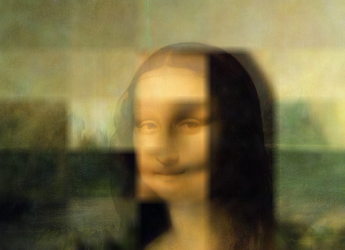I tried to figure out an exact form for the degree of bending for a small drop, but that ended up being too difficult, so I used a geometry program called GeoGebra to make the construction I was looking for. I collected a couple points and fit a parabola:
The x-axis is the distance off-center that the light hits the drop, and the y-axis is the degree of bending as a fraction of pi. The equation for the parabola is
so for a large beam of parallel light entering a drop, the exit path looks like this:
Averaging over all y values gives a bend of 0.11π.
If we assume the air/water mixture was about 10% water, then we have one 1 mm^3 drop in every 10 mm^3 of space, or approximately one drop every 4 mm. If some light enters a drop, given our average bending it will spread out over the 4 mm to cover approximately 3 times the original space.
To get an idea of what this looks like, I took an image,
and divided it into a 5x5 grid. Each grid square I divided into 3x3 and expanded the middle square to fill the larger square. Mixing this with the original gives
This is a pretty coarse approximation of what's really going on, but it shows how quickly this process can make an image indistinct.





Insightful.
ReplyDelete